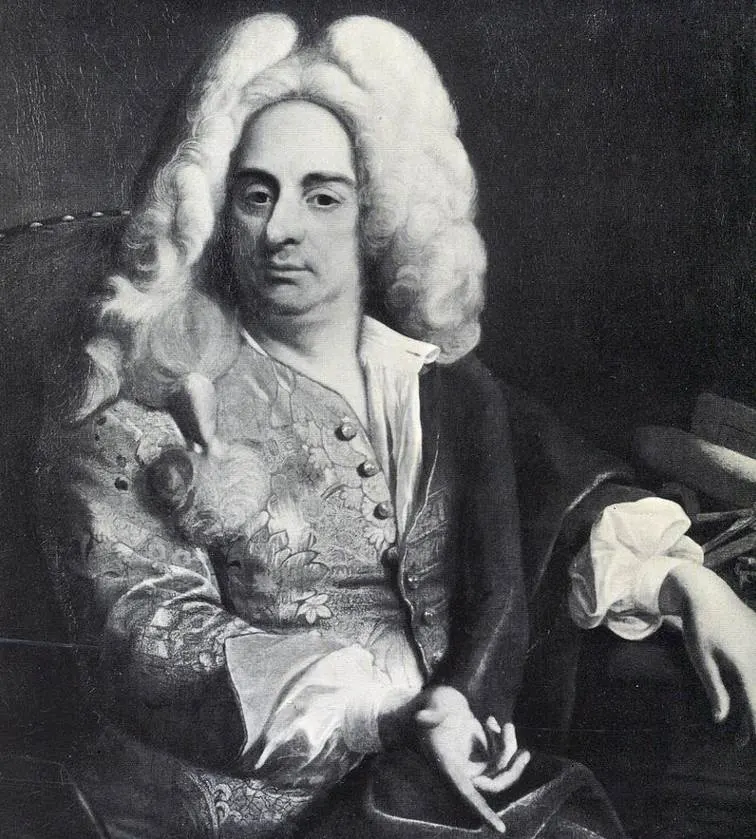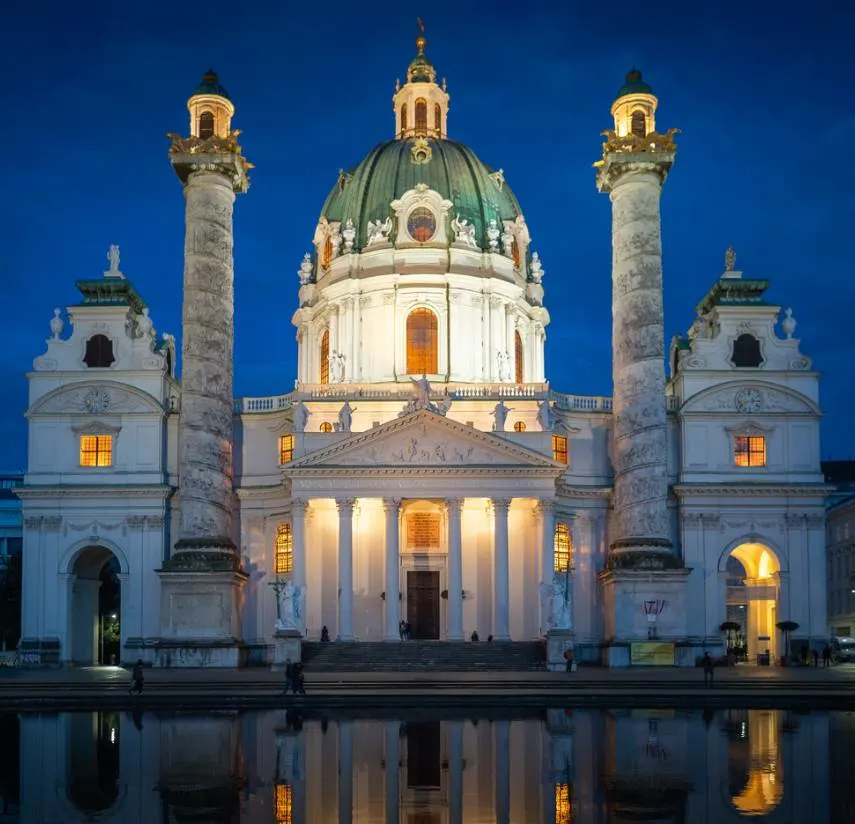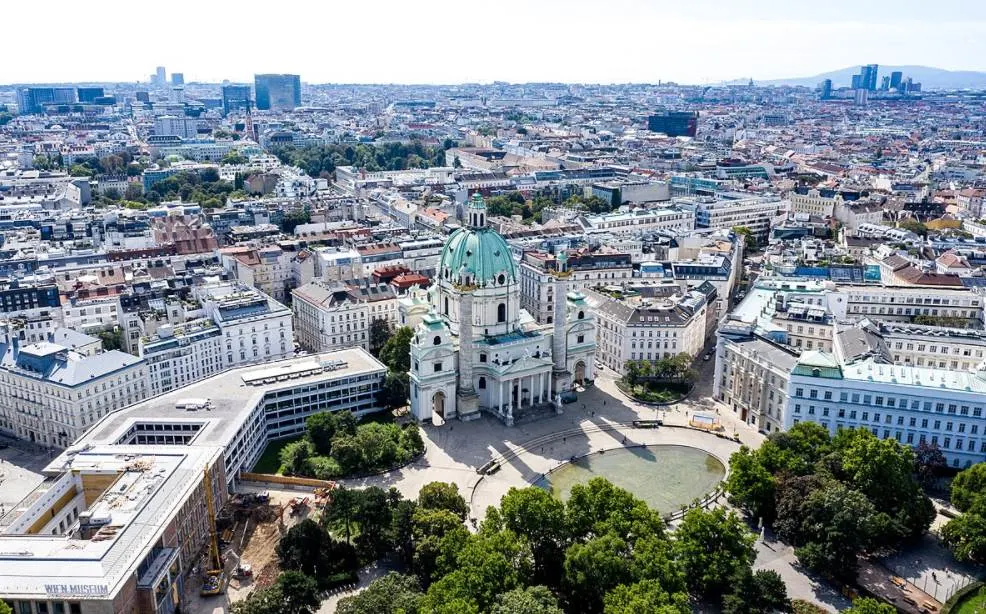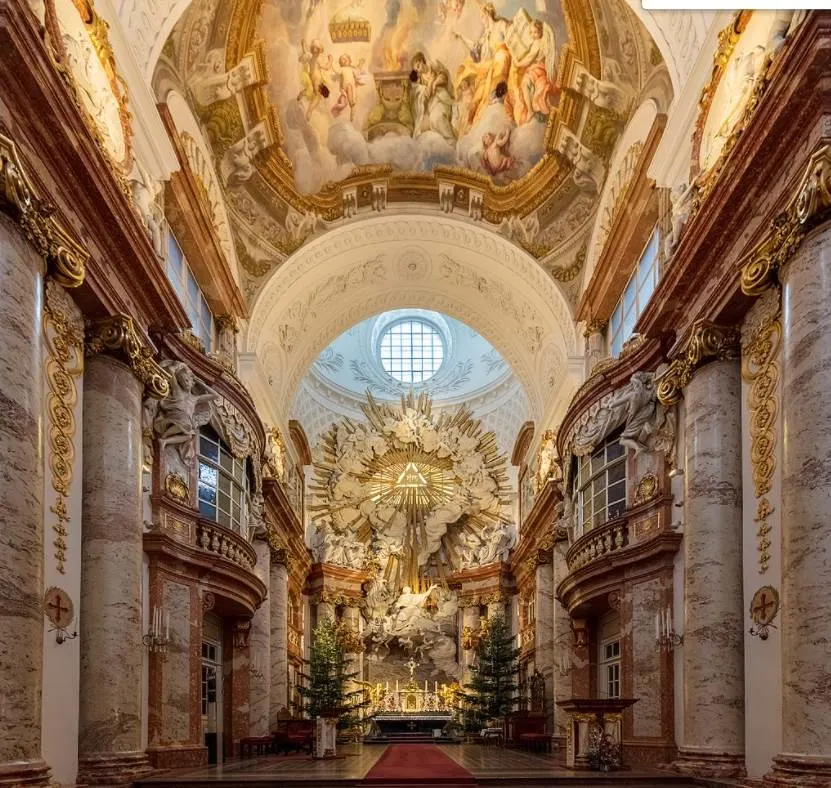One of the greatest Baroque buildings in Europe is also one of the most fantastic churches you’ll ever come across. To be described as one of the most amazing buildings in Vienna it really needs to be something special.
Let’s take a closer look at some of the most interesting facts about Karlskirche, a building with several intriguing stories to tell.
1. It’s located on a popular square just south of Vienna’s historical heart
The official name of Karlskirche is “Rektoratskirche St. Karl Borromäus” and is referred to in English as “Saint Charles Church.” It’s located on the south side of Karlsplatz, a city square just south of the historical center or “Innere Stadt” of Vienna, the capital of Austria.
This popular square is located just a few hundred meters south of the Ringstraße, the Grand Boulevard that completely encircles the Innere Stadt of Vienna. This ring road was built on the location of the medieval city wall that once protected the city.
The construction of the Vienna Ring Road went hand in hand with the construction of various famous landmarks, especially on the south side near Karlskirche. Some of the structures along the road are the Hofburg Palace, the Kunsthistorisches Museum, and the Vienna State Opera.

2. It was built following a devastating epidemic in the early 18th century
The church was constructed over 100 years before the medieval city wall was demolished and replaced with an immense avenue. The imposing building was completed between 1716 and 1737.
It was commissioned by the Habsburg ruler at the time named Charles VI, Holy Roman Emperor (1685-1740). The reason he wanted a church built on this location was to celebrate the end of a great plague pandemic that terrorized the city.

3. The church was dedicated to a 16th-century Italian saint
The church was dedicated to Charles Borromeo (1538-1584), the Archbishop of Milan between 1564 and 1584 who died from a fever at the age of 46. He was an important figure in the Catholic Counter-Reformation, the response of the Catholic Church against the Protestant Reformation.
What’s remarkable is that this popular Archbishop was venerated in 1610, merely 26 years after he passed away. Karlskirche was dedicated in his honor as both the namesake of Charles VI and as a reputed healer of victims of the plague.

The interior of the church is decorated with a large number of paintings and frescoes depicting various scenes from the life of Borromeo. His final resting place is the amazing Milan Cathedral.

4. The son of the main architect completed the project in the 1730s
An architectural competition was launched to pitch a suiting design for the church the year that the plague ended. The winner was one of the most renowned Baroque architects of the 18th century in the Habsburg Empire, a man named Johann Bernhard Fischer von Erlach (1656-1723).
Some of his most famous works include Schönbrunn Palace, the opulent summer palace of the Habsburg rulers, and the Austrian National Library, both structures in Vienna.
Since the man died just 7 years after the construction of the huge church was started he didn’t complete the project. It was passed on to his son, Joseph Emanuel Fischer von Erlach (1693-1742), who completed the work in 1737.

5. The Baroque building also features Neoclassical elements
Although Karlskirche is considered to be one of the most astounding Baroque buildings in Vienna, it also features Neoclassical elements which were derived from the most famous churches in Europe.
The idea behind the design was to create a unique ensemble of features that were derived from the most famous structures in Europe at the time. This includes:
- Solomonic Columns from the Temple of Solomon in Jerusalem.
- A dome resembling those of the Pantheon and St. Peter’s Basilica in Rome and Les Invalides in Paris.
- Various Baroque elements from Christopher Wren’s St. Paul’s Cathedral in London.
The portico resembles a Greek temple and the other impressive architectural features of Karlskirche are magnificently highlighted at night.

6. The two massive columns were inspired by an ancient column in Rome
Although the two massive columns next to the portico of the church are referred to as Solomonic columns, they were actually inspired by a similar structure that is located in Rome.
Trajan’s Column was completed in 113 A.D. and features spiraling reliefs that depict the victories of the Roman army against the Dacians. These wars took place in the early 2nd century A.D. during the reign of Roman Emperor Trajan.
The Karlskirche columns depict scenes from the life of Charles Borromeo to whom the church was dedicated and was sculpted by Italian Late Baroque artist Lorenzo Mattielli (1688-1748).

7. How big is Karlskirche in Vienna?
Although Karlskirche is far from being the largest church in the world, it still looks pretty impressive in the urban landscape of Vienna. That’s mainly because it was built in an area that doesn’t feature any amazing skyscrapers, something that allows the green dome to stick out above the surrounding buildings.
The church has the following dimensions:
- Length: 55 meters (180.4 feet)
- Width: 40 meters (131.2 feet)
- Dome Height: 70 meters (229.7 feet)

8. The interior of the church is just as impressive as its exterior
Is it worth entering the church or is admiring the magnificent Baroque exterior of Karlskirche enough?
The answer is definitely, yes, entering the church should be a must when you’re in the area. The exuberant Baroque interior is full of amazing artworks dedicated to Saint Charles Borromeo and features elaborately decorated columns and architectural elements.
The interior of the dome features an immense fresco and the church leads up to the high altar that is decorated with a work called the “Apotheosis of Saint Charles Borromeo.”
Other features are an immense reflecting ball, an amazingly decorated pulpit, and various sculptures designed by architect and sculptor Johann Bernhard Fischer von Erlach himself.

